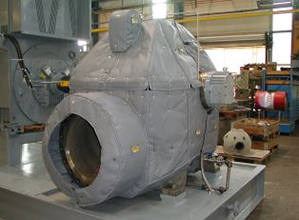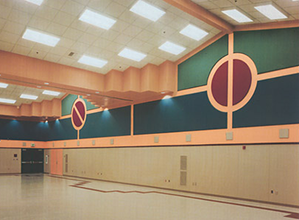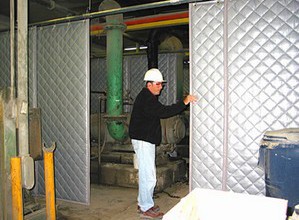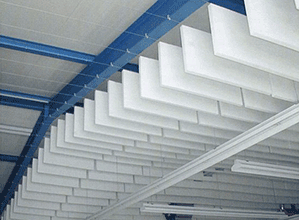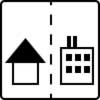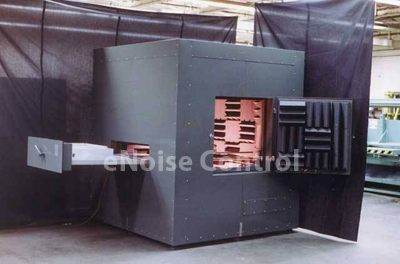Acoustic Test Chamber
Many types of products require good acoustic quality. Speaker systems need to pump out balanced sound levels, car engines need to hum rather than whir or rattle, and air conditioners need to run unobtrusively in the background. If you manufacture products like these, running acoustic tests is important to you.
However, acoustic tests require special spaces. They should be conducted in a place where the sounds can be isolated and any unwanted noises are kept outside. This is where acoustic test booths come in.
Acoustic test booths are specially engineered to meet the needs of product manufacturers. The inner chambers are constructed such that shop floor noise and sound reflections are kept to a minimum, ensuring accurate measurement of acoustic intensity. Acoustic test booths also have noise analysis features that help you detect any existing product defects.
Types of Acoustic Test Chambers
There are three main types of acoustic test chambers:
- Hemi-Anechoic Rooms. In a hemi-anechoic chamber, only part of the room receives acoustical treatment. For example, the walls and ceiling may be designed to absorb sound energy, but not the floors. Hemi-anechoic rooms are generally used for automobiles, construction equipment, heavy appliances (e.g., refrigerators, washing machines), and other items that operate directly on sound-reflective surfaces such as floors and roads.
- Full Anechoic Chambers. This type of chamber is designed to absorb up to 100% of the sound energy within its walls. Its surfaces are covered with anechoic material and its floor is designed to support heavy test specimens. Full anechoic chambers are often used for speakers, microphones, and other equipment that requires reverberation to be kept at a minimum.
- Pass/Fail Chambers. As its name suggests, this chamber is designed to test whether a specimen meets the acceptable standards of acoustic quality. Pass/fail chambers accommodate devices like mobile phones, computer equipment, and others that don’t need to be tested under hemi-anechoic or full anechoic conditions.
Choosing an Acoustic Test Chamber
You can also customize acoustic test booths according to your specific needs. Some of the important considerations when selecting an acoustic test booth are listed below.
- Size of the room and equipment to be tested. What are the minimum length, width, and height requirements of the room and equipment to be tested?
- Ventilation. What volume of air (in CFM) is required for testing?
- Type of electrical equipment used. What kind of power does the electrical equipment use and how many duplex receptacles does it have?
- Type of lighting required. What is the minimum light level or wattage needed for the test?
- Number of doors and windows. What are the dimensions (length and width) or the doors and windows?
- Ambient noise levels. How high is the ambient noise surrounding the test chamber, as measured in dBA?
- Cut-off frequency. What is the desired lowest frequency to test in Hz?
Other features you can include when necessary:
- Fire protection options
- A CCTV camera system
- A sketch of the acoustic test booth’s specifications
Acoustic test booths should also comply with requirements laid out under ANSI S12.10, ANSI S12.54, ANSI S12.55, ISO 3445, ISO 3744, ISO 7779, and similar standards. It also if helps if the booth manufacturer offers field test environments, engineering, and installation assistance to ease your use of their product.
Learn more about the features and benefits of acoustic test rooms. Call eNoise Control at 888.213.4711 or email us at info@eNoiseControl.com and learn how we can help you with your application.
